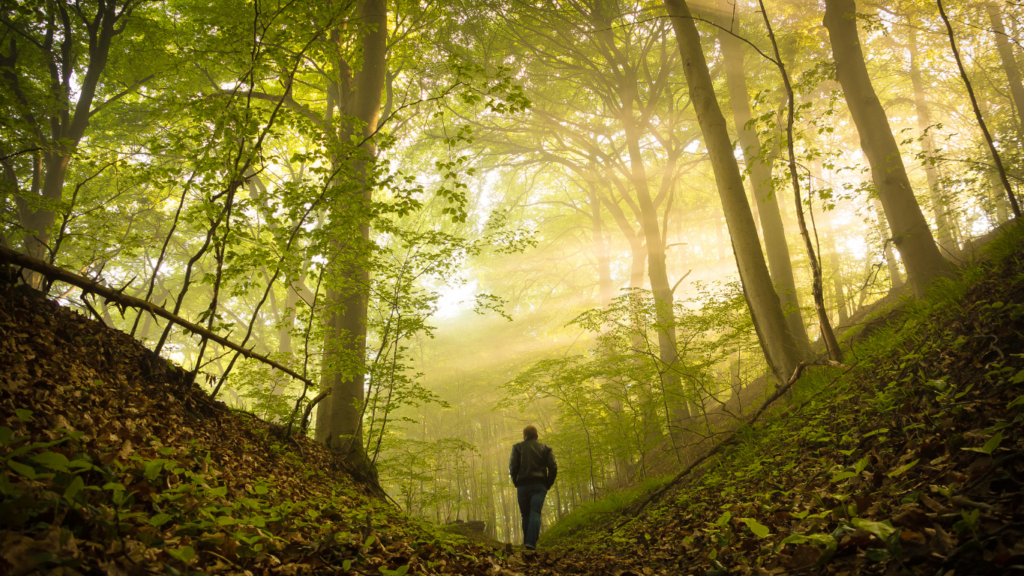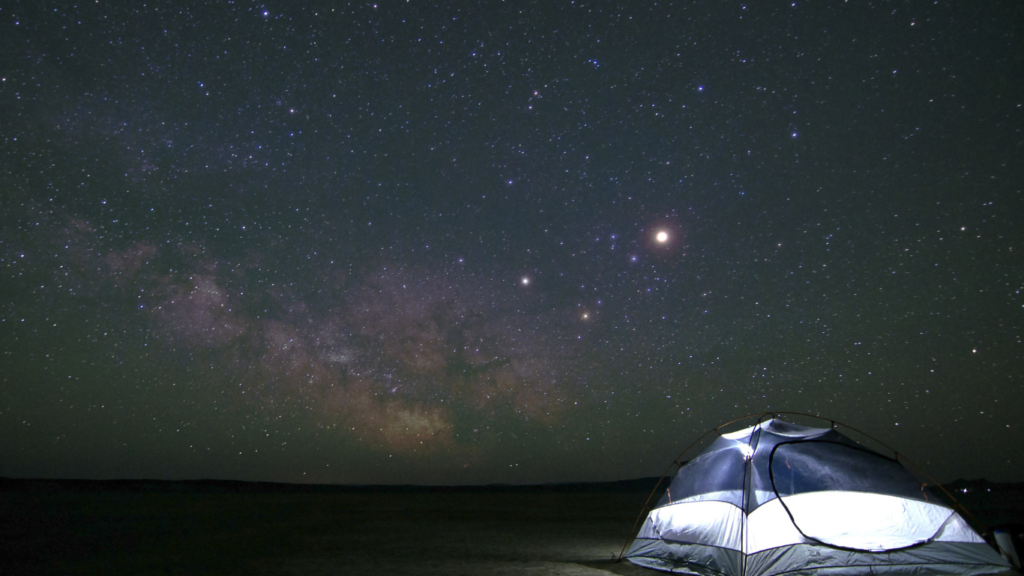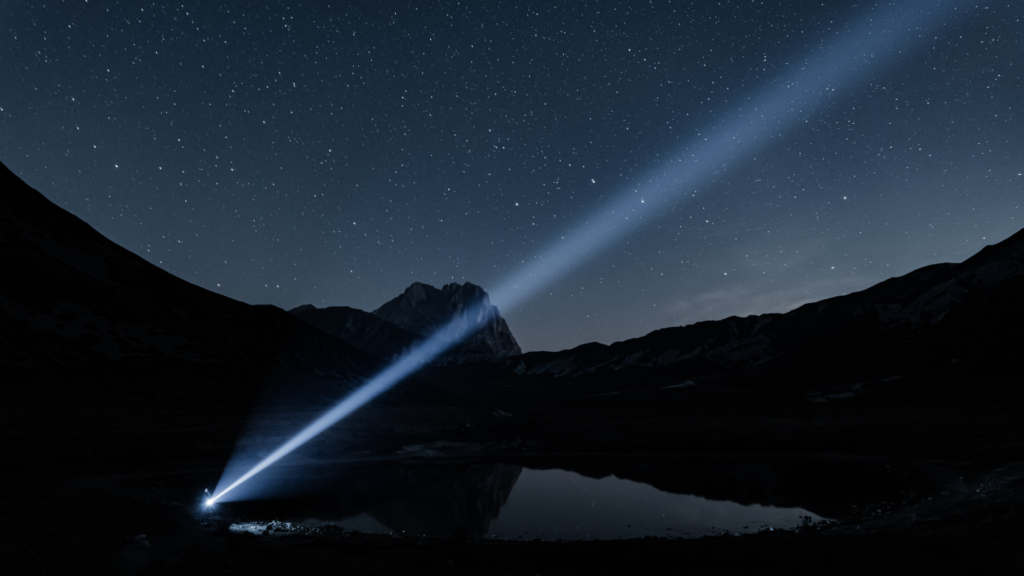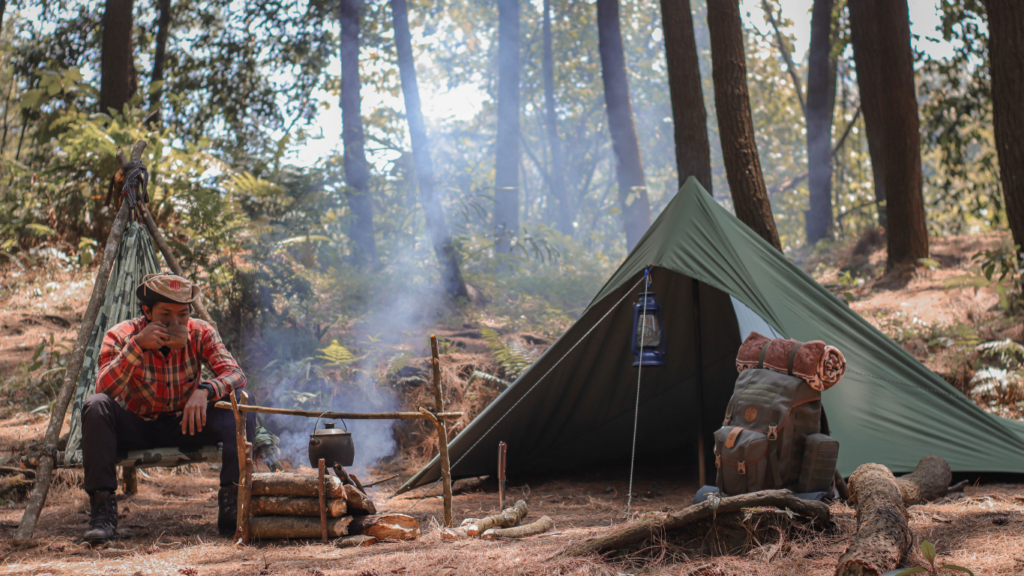Understanding Basic Navigation
Basic navigation skills play a crucial role in survival. I rely on various natural elements and tools to find my way in the wilderness.
Using the Sun for Direction
The sun, a consistent natural element, helps determine direction. In the Northern Hemisphere, the sun rises in the east and sets in the west. At noon, the sun is due south. Using a stick, I can create a simple sundial. By placing a stick upright in the ground and marking the shadow’s tip, then waiting 15 minutes to mark the new shadow, I can identify the east-west line.
Navigating by the Stars
At night, stars become vital navigational aids. In the Northern Hemisphere, I locate the North Star (Polaris) to determine true north. To find Polaris, I use the Big Dipper. The two stars at the edge of the Big Dipper’s bowl point directly to the North Star. In the Southern Hemisphere, I identify the Southern Cross constellation to find south. A line extending from the long axis of the Southern Cross leads to the South Celestial Pole.
Observing Vegetation and Natural Landmarks
Vegetation and natural landmarks provide valuable clues. Trees often have moss growing on their north side in the Northern Hemisphere due to limited sunlight. In the Southern Hemisphere, moss typically grows on the south side. I also note the growth patterns of branches. Trees in open areas tend to have branches that grow more densely on the sunlit side.
Listening to Environmental Clues
Environmental clues, like wind and water sounds, offer additional navigation information. Streams and rivers generally flow downhill and often lead to larger water bodies, which I use to orient myself. Wind patterns can indicate the presence of mountains or open plains; I notice the effect of terrain on wind direction and strength.
Utilizing Tools
Simple tools, such as a wristwatch, enhance my navigation capabilities. To use a watch as a compass, I point the hour hand at the sun and bisect the angle between the hour hand and the 12 o’clock mark. This line indicates the north-south direction in the Northern Hemisphere. In the Southern Hemisphere, I point the 12 o’clock mark at the sun and bisect the angle between the 12 o’clock mark and the hour hand to find the north-south line.
These techniques, relying on natural elements and simple tools, form the foundation of basic navigation skills essential for survival in the wilderness.
Natural Navigation Techniques
Mastering natural navigation techniques is crucial for finding your way without a compass.
Using the Sun and Shadows
The sun rises in the east and sets in the west. This basic fact helps determine direction during the day. In the morning, face the sun to find east, with west behind you. To find south, position your left arm toward the sunrise. Use shadows to track time: place a stick upright in the ground and mark the tip of its shadow. After 15 minutes, mark the new position. The line between these points runs west to east.
Observing Stars and Night Sky

- Stars provide reliable navigation at night.
- Locate the North Star, which is nearly stationary and aligned with the Earth’s rotational axis.
- Find it by locating the Big Dipper constellation; the two stars at the end of the ‘bowl’ point towards it.
- For southern hemisphere navigation, use the Southern Cross constellation.
- Draw a line from the top of the cross to the bottom and extend it about four and a half times the length of the cross to find the south celestial pole.
Reading Nature’s Signs
Nature offers clues about direction. Moss often grows thicker on the north side of trees in the northern hemisphere due to moisture and shade. Observe the direction of wind-bent trees, which generally indicates prevailing wind direction and often aligns with large weather patterns. Pay attention to vegetation: denser growth typically indicates south-facing slopes in the northern hemisphere, which get more sunlight.
Each of these techniques provides valuable information for natural navigation, enhancing confidence and safety in the wilderness.
Creating and Using Simple Tools
In survival situations, creating and using simple tools can greatly improve navigation efficiency. When natural navigation markers are insufficient, crafting basic instruments becomes crucial.
Crafting a Makeshift Compass
A makeshift compass can be created with readily available materials. First, find a small, straight, and thin metal object like a sewing needle or a piece of wire. Rub it on a piece of silk or your clothing to magnetize it. Then, gently place it on a leaf floating in a water-filled container or on a slice of cork. The needle will align north-south. Ensure minimal disturbance as it stabilizes parallel to Earth’s magnetic field.
Using a Watch for Direction
Analog watches can serve as directional tools. In the Northern Hemisphere, point the hour hand at the sun. The midpoint between the hour hand and 12 o’clock marks south. In the Southern Hemisphere, point 12 o’clock at the sun. The midpoint between 12 o’clock and the hour hand marks north. Use this method during daylight hours with an accurately set analog watch.
Creating and using simple tools complements natural navigation techniques, ensuring survival skills are well-rounded. All these methods form a cohesive strategy, equipping individuals to confidently traverse the wilderness.
Staying Oriented in Various Terrains
Navigating different terrains poses unique challenges but is essential for wilderness survival. Below, I provide specific strategies for forested areas, deserts, and mountainous regions.
Navigating Forested Areas
Thick forests can obscure the sky, making traditional navigation methods difficult. Trees provide essential clues, though. Note moss growth. In the Northern Hemisphere, moss usually grows on the north side of trees due to less sunlight. Follow water sources. Streams and rivers often lead to larger bodies of water or human settlements.
Finding Your Way in Deserts
Deserts lack the abundant landmarks seen in other terrains, requiring specific strategies. Use the sun. It’s a reliable orientation tool, rising in the east and setting in the west. Create shade marks. Place a stick upright in the sand; the shadow moves and indicates direction. Identify natural formations. Sand dunes frequently align with prevailing winds, offering directional hints.
Surviving in Mountainous Regions
Mountainous regions pose hazards like variable weather and rugged terrain. Identify ridgelines. Follow them for more accessible passes and to avoid steep inclines. Use river valleys. They often lead to lower ground and potential civilization. Observe vegetation. Tree lines and distinct vegetation zones signal elevation changes crucial for understanding your location.
Safety and Precautionary Measures
Ensuring safety and taking precautionary measures is crucial when navigating without a compass. Following these strategies helps maintain health and direction.
Staying Calm and Collected
Maintaining calmness during uncertain situations prevents rash decisions and helps focus on available resources. Deep breathing and methodical thinking conserve energy and reduce stress. Setting small, achievable goals gives a sense of direction and control.
Importance of Hydration and Nutrition
Prioritizing hydration and nutrition sustains energy levels and cognitive function. Consuming small, frequent sips of water prevents dehydration. For instance, finding water sources from streams or collecting dew boosts hydration. Eating high-energy foods like:
- nuts
- dried fruits
- small portions of protein
preserves stamina and mental clarity. Carry lightweight, non-perishable food items to manage unforeseen delays.





